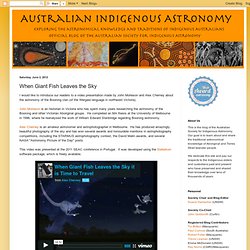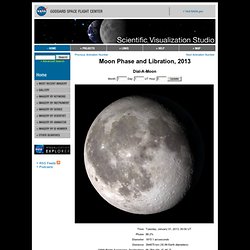

Galileo Training Program. Planetary Science Institute. UNAWE.
SunEarthTools.com. Home > Solar tools > Sun Position Back to top Content | Data + Map | Chart Polar | Chart Cartesian | Table | Annual sun path | Annual sun path Set the data as you want and click on email image to get the file in attach.The excel file contain the sun path for one year, with step (5,10,15,20,30,60 min), for the moment limited because is too heavy for the server.

The first column contain the date the others columns contain E=elevation A=azimuth and time (from 00:00 to 23:59). For the annual SunRise SunSet Calendar also on excel file you can use this link: SunRise SunSet Calendar Sun Position Sun chart Daylight How to use the tool map Use Mode Equation of time shadow Date Format Comment Sun Position Calculation of sun’s position in the sky for each location on the earth at any time of day. Sun chart Daylight How to use the tool map Search Map pan control Map zoom control Coordinates This text visualize the coordinates referring to the marker on the map.
Address Left click Double click Right click Use Mode Sun path Point. Amazing Space. Science & Environment - How big is space? Big questions demand big answers.

And here at Future we have a hard time thinking of a question bigger than: how big is space? So, we set about trying to illustrate it. The resulting picture is so large that we could not squeeze it all on to one image in Photoshop. Instead, we had to create several sections and stitch them together for you. Printed out, the graphic spans 27 pages of A4 paper. But even at this size we only managed to get to the edge of our Solar System – known as the heliosphere. Yet even within this relatively small corner of space, there is a lot packed in there. What is the most distant man-made object? Scroll (and scroll... and scroll) through our monster graphic to explore our cosmic neighbourhood. And if you want to check out the data we used to construct it, you can find it here. Solar System Scope. Heavens Above. Australian Aboriginal Astronomy: When Giant Fish Leaves the Sky. I would like to introduce our readers to a video presentation made by John Morieson and Alex Cherney about the astronomy of the Boorong clan (of the Wergaia language in northwest Victoria).

John Morieson is an historian in Victoria who has spent many years researching the astronomy of the Boorong and other Victorian Aboriginal groups. He completed an MA thesis at the University of Melbourne in 1996, where he reanalysed the work of William Edward Stanbridge regarding Boorong astronomy. Alex Cherney is an amateur astronomer and astrophotographer in Melbourne. He has produced amazingly beautiful photography of the sky and has won several awards and honourable mentions in astrophotography competitions, including the STARMUS astrophotography contest, the David Malin awards, and several NASA "Astronomy Picture of the Day" posts. This video was presented at the 2011 SEAC conference in Portugal. ASKAP Radio Telescope. Total Solar Eclipse 2012 - Total Solar Eclipse 2012 Education Resources.
The Scale of the Universe 2. Stellarium. SVS Animation 4000 - Moon Phase and Libration, 2013. Dial-A-Moon The animation archived on this page shows the geocentric phase, libration, position angle of the axis, and apparent diameter of the Moon throughout the year 2013, at hourly intervals.

Until the end of 2013, the initial Dial-A-Moon image will be the frame from this animation for the current hour. More in this series: 2014 | 2014 South | 2013 South | 2012 | 2011 The jagged, cratered, airless lunar terrain casts sharp shadows that clearly outline the Moon's surface features for observers on Earth. This is especially true near the terminator, the line between day and night, where surface features appear in high relief. The Moon always keeps the same face to us, but not exactly the same face.
The word comes from the Latin for "balance scale" (as does the name of the zodiac constellation Libra) and refers to the way such a scale tips up and down on alternating sides. Portal to the Universe.